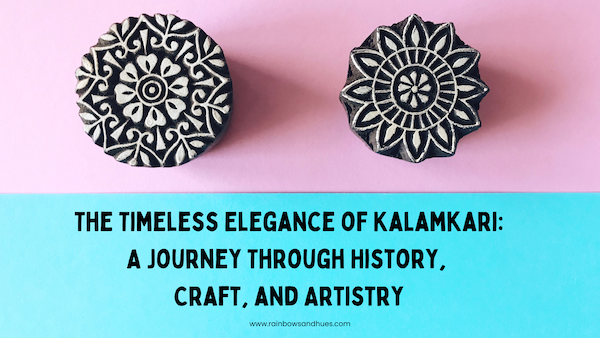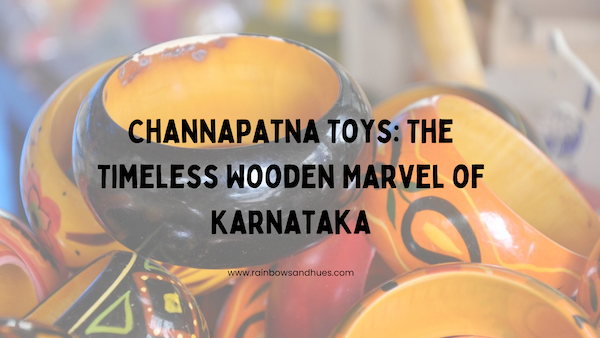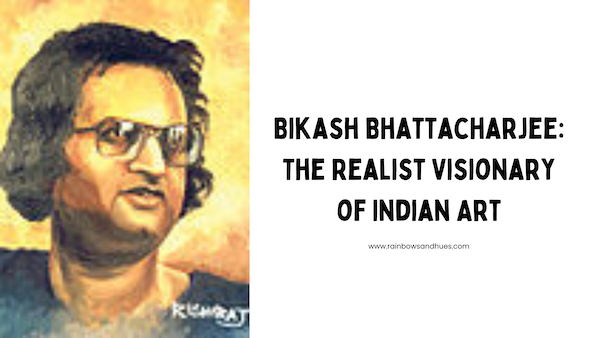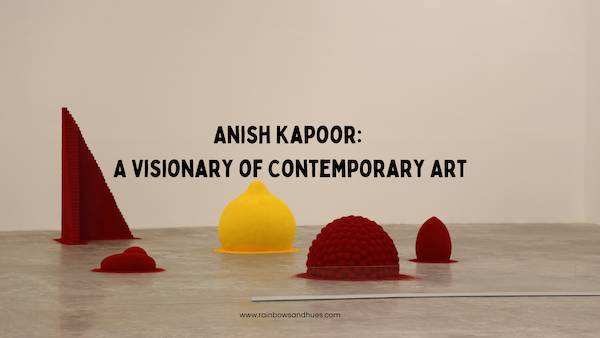Kalamkari, a traditional Indian art form, is a testament to the rich cultural heritage and skilled craftsmanship that has been passed down through generations. This intricate art, known for its exquisite hand-painted and block-printed designs, has a history as colorful and detailed as the patterns it produces. In this blog post, we’ll explore the origins of Kalamkari, its evolution over time, notable artists who have kept the tradition alive, and the techniques involved in creating these stunning works of art.
Also Read: The Fascinating World of Oil Paints
The Origins of Kalamkari
The word “Kalamkari” is derived from two Persian words: “kalam,” meaning pen, and “kari,” meaning craftsmanship. This aptly describes the technique of using a pen or stylus to create intricate designs on fabric. The art form has roots dating back over 3,000 years, with its origins in the Andhra Pradesh region of India, particularly in the town of Machilipatnam. It also flourished in the town of Srikalahasti, where it became associated with temple rituals and storytelling.
Kalamkari was traditionally used to depict scenes from Hindu epics such as the Ramayana and Mahabharata. Artists would create large panels of fabric illustrating these stories, which were then displayed in temples or used in religious ceremonies. The art form also found a place in royal courts, where it was used to create elaborate garments and tapestries.
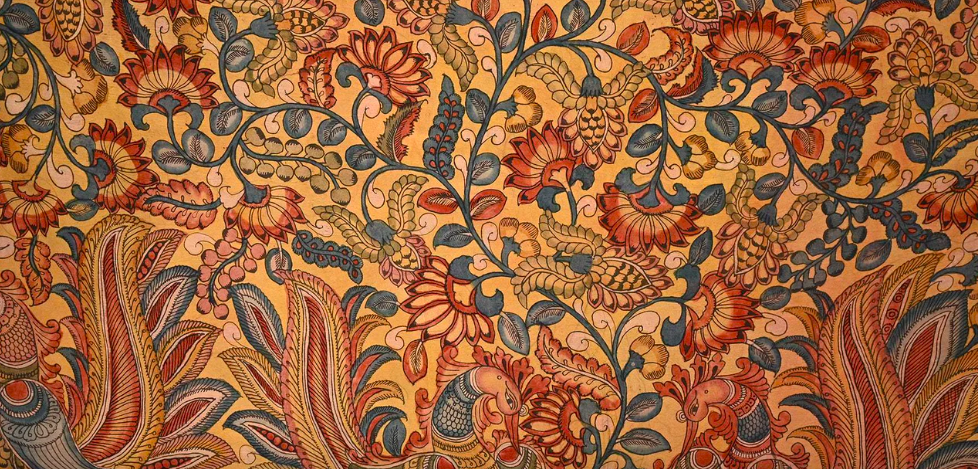
Evolution of Kalamkari Art
Over the centuries, Kalamkari evolved into two distinct styles: the Machilipatnam style, which is predominantly block-printed, and the Srikalahasti style, which is hand-painted. The Machilipatnam style involves the use of carved wooden blocks to stamp patterns onto fabric, while the Srikalahasti style relies on the freehand drawing of designs with a pen-like tool called a kalam.
Also Read: Pattachitra: A Window into Ancient Indian Folk Art
During the Mughal period, Kalamkari gained prominence as it was embraced by the royalty, leading to the introduction of Persian influences in the designs. This period saw the incorporation of floral motifs, arabesques, and intricate borders, which added a new dimension to the art form.
The British colonial period brought further changes, as European traders became interested in Kalamkari textiles. The art form adapted to cater to Western tastes, leading to the creation of new patterns and color schemes. Despite these changes, Kalamkari retained its traditional essence, continuing to depict religious and mythological themes alongside newer, more secular designs.
Famous Artists and Their Contributions
Several artists and artisans have played a crucial role in preserving and promoting Kalamkari over the years. Among them is Padmashri Kalamkari K. Laxma Goud, a renowned artist known for his contribution to modernizing Kalamkari while staying true to its roots. His work has helped bring Kalamkari to the global stage, making it more accessible to contemporary audiences.
Another significant figure is K. Venkatappa, whose family has been practicing Kalamkari for generations. His intricate designs and dedication to traditional methods have earned him recognition both in India and internationally. Venkatappa’s work exemplifies the delicate balance between maintaining tradition and embracing innovation in Kalamkari.
Also Read: Alcohol Ink Art: An Exhaustive Guide
Unknown Facts
While this art form is celebrated for its beauty, there are several lesser-known aspects of this art form that make it even more fascinating:
- Natural Dyes: One of the most remarkable features of Kalamkari is its use of natural dyes. Artisans use extracts from plants, roots, and minerals to create the vibrant colors seen in Kalamkari textiles. For example, indigo is used for blue, pomegranate seeds for yellow, and madder root for red. This commitment to natural dyes not only preserves the authenticity of the art form but also makes it environmentally friendly.
- Complex Process: The process of creating a Kalamkari piece is incredibly intricate and time-consuming. It involves multiple steps, including treating the fabric with a mixture of cow dung and bleach, washing it several times, and applying different layers of color. Each step requires precision and patience, as even a small mistake can ruin the entire piece.
- Cultural Significance: Kalamkari is more than just an art form; it is deeply intertwined with the cultural and religious practices of the regions where it is produced. In Srikalahasti, for instance, Kalamkari artists often fast and perform rituals before beginning their work, reflecting the spiritual significance of the art.
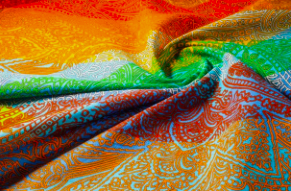
Global Influence and References
Kalamkari has not only thrived in India but has also made its mark on the global stage. In the 17th and 18th centuries, Kalamkari textiles were highly sought after by European traders. These textiles were exported to various parts of Europe, where they were used to create fashionable garments and home furnishings.
Today, Kalamkari continues to inspire artists and designers around the world. Renowned fashion designers such as Ritu Kumar and Sabyasachi Mukherjee have incorporated Kalamkari motifs into their collections, bringing this ancient art form into the realm of high fashion. The global interest in sustainable and ethically produced textiles has also led to a renewed appreciation for Kalamkari, as consumers seek out unique, handcrafted products with a rich cultural heritage.
How to Create Kalamkari Art
For those interested in learning how to create this art form, it’s essential to understand the traditional techniques and materials involved. Here’s a basic guide to get you started:
Materials Needed:
- Cotton or Silk Fabric: Traditionally, this art form is done on natural fabrics such as cotton or silk.
- Kalam (Pen): A special pen made from bamboo or date palm sticks, used for drawing outlines.
- Natural Dyes: Extracts from plants, roots, and minerals are used to create the dyes.
- Wooden Blocks: For the block-printing style, carved wooden blocks are used to stamp patterns onto the fabric.
Steps to Create Kalamkari:
- Prepare the Fabric: The fabric is first treated with a mixture of cow dung and bleach to remove impurities. It is then soaked in a solution of buffalo milk and Myrobalan fruit, which acts as a mordant to help the fabric absorb the dyes.
- Draw the Design: Using the kalam, the artist carefully draws the design onto the fabric. This step requires a steady hand and a keen eye for detail.
- Apply the Dyes: The outlines are filled in with natural dyes, starting with the lightest colors and gradually adding darker shades. Each color is applied in layers, with the fabric being washed and dried between each application.
- Final Washing: Once the design is complete, the fabric is given a final wash to remove excess dye and fix the colors. The result is a vibrant, long-lasting piece of art that showcases the beauty of Kalamkari.
Conclusion
Kalamkari is a timeless art form that embodies the rich cultural heritage of India. From its ancient origins to its global influence, Kalamkari has captivated artists and art lovers alike with its intricate designs and vibrant colors. Whether you are an aspiring artist or simply an admirer of traditional crafts, understanding the history, techniques, and significance of Kalamkari can deepen your appreciation for this exquisite art form.
In a world where mass-produced goods are the norm, Kalamkari stands out as a testament to the value of craftsmanship, tradition, and creativity. By preserving and promoting this ancient art, we not only keep a piece of our cultural heritage alive but also ensure that future generations can continue to experience the beauty and artistry of Kalamkari.
Also Read: Lippan Art: A Unique Blend of Tradition and Craftsmanship
***
Hop over to our website www.rainbowsandhues.com to explore exciting offers on arts & craft supplies on our website! Follow @rainbowsandhues on Instagram to get regular information on new products and deals!

